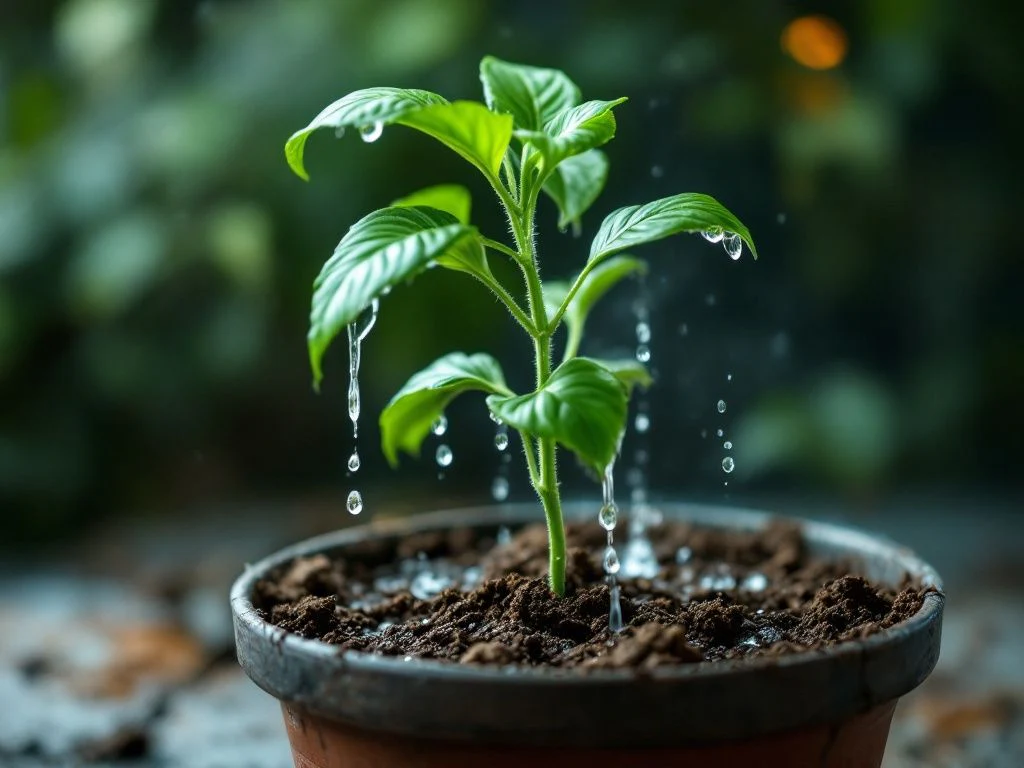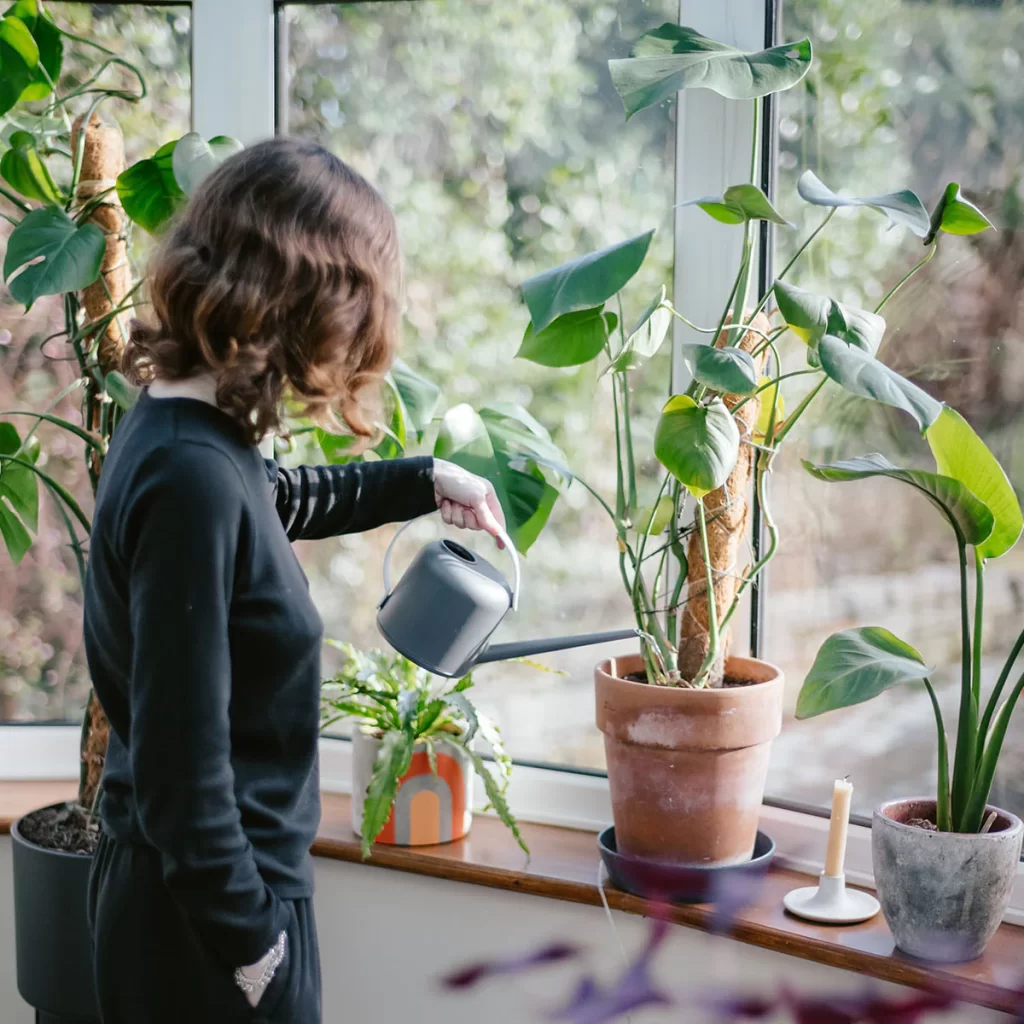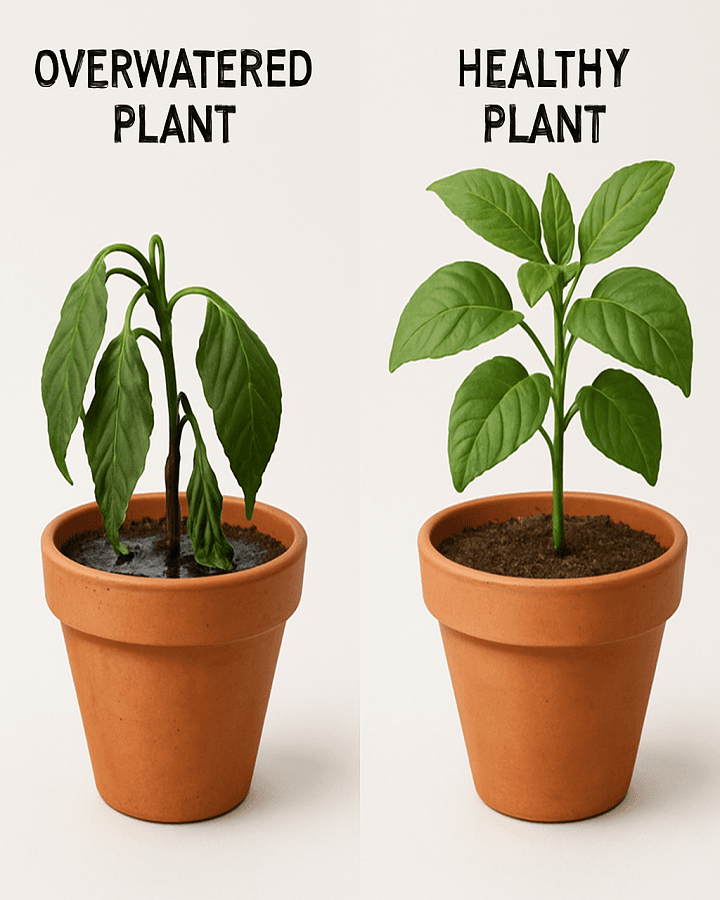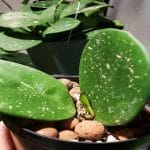
Image Credit – Hema
When your plant isn’t thriving, the first thing to check is whether it’s getting the right amount of water. One of the most common mistakes plant owners make is confusing overwatering from underwatering—they can cause similar symptoms like yellowing leaves, wilting, or stunted growth. However, the signs and solutions are different. Here’s how to easily tell the difference and what to do about it.
10 Easy Ways to Tell Overwatering from Underwatering (with Solutions)

1. Check the Soil Moisture
Overwatering: The soil stays soggy or wet long after watering.
Underwatering: The soil is dry, cracked, and pulls away from the pot edges.
Solution: Stick your finger about 2 inches into the soil. If it feels wet, hold off on watering. If it’s dry, it’s time to water. Use moisture meters for more accuracy.
2. Look at the Leaves
Overwatering: Leaves turn yellow and may feel soft or limp.
Underwatering: Leaves become dry, brittle, or develop brown edges.
Solution: Identify the pattern. Soft yellowing indicates too much water. Brown, crispy tips suggest too little. Adjust your watering routine accordingly.
3. Feel the Plant Pot’s Weight
Overwatering: The pot remains heavy days after watering.
Underwatering: The pot feels light quickly after watering.
Solution: Lift your plant’s pot before and after watering to get used to the correct weight. Over time, you’ll be able to spot changes easily.
4. Inspect for Wilting
Overwatering: Wilting while the soil is still wet—leaves may feel mushy.
Underwatering: Wilting with dry soil—leaves are crisp and droopy.
Solution: Water only when needed. Let the top inch or two of soil dry before watering again.
5. Monitor Leaf Drop
Overwatering: Sudden loss of healthy green leaves.
Underwatering: Gradual shedding of dry or yellowing leaves.
Solution: Avoid extreme swings in watering. Keep a consistent watering schedule based on your plant’s needs.
6. Check Root Health (If Repotting)
Overwatering: Roots are black, mushy, and smell foul (root rot).
Underwatering: Roots are thin, dry, and may appear shriveled.
Solution: For overwatering, trim rotting roots and repot in well-draining soil. For underwatering, rehydrate slowly over a few days.
7. Growth Speed and New Leaves
Overwatering: New growth is slow or non-existent; leaves may look pale.
Underwatering: Small new leaves or no new growth at all.
Solution: Boost healthy growth by providing the correct watering rhythm. Keep a journal to track changes over time.
8. Smell and Soil Surface
Overwatering: Foul smell from the soil or mold/fungus growing on top.
Underwatering: No odor, but soil may appear dusty and dry.
Solution: For overwatering, remove mold and improve airflow. Use a fan or open windows nearby. For underwatering, rehydrate slowly and mulch the soil surface.
9. Leaf Texture
Overwatering: Leaves feel soft and may become translucent.
Underwatering: Leaves are rough or feel like paper.
Solution: Adjust your watering immediately. For overwatering, let the soil dry out. For underwatering, water deeply but not all at once to avoid shock.
10. Presence of Pests
Overwatering: Fungus gnats and mold thrive in constantly moist soil.
Underwatering: Spider mites and dry-loving pests may appear.
Solution: For overwatering, let the topsoil dry out and consider using neem oil or cinnamon. For underwatering, increase humidity and inspect your plant regularly.
Learning to tell overwatering from underwatering is a crucial skill for every plant parent. Although the symptoms may look similar at first, observing the soil, leaves, and overall plant health can reveal the real issue. Proper watering isn’t just about frequency—it’s about balance. Always consider the type of plant, light exposure, pot size, and season when planning your watering routine.
By spotting these signs early and applying the right solutions, you can keep your plants happy, healthy, and thriving all year round.
Understanding the difference between overwatering from underwatering can make all the difference in your plant care routine. By observing signs like soil moisture, leaf color, and plant behavior, you can confidently determine the issue and apply the right solution. Have you struggled to tell overwatering from underwatering before? Let us know your experience or questions in the comments below — we’d love to hear from you!
Frequently Asked Questions
How do I know if my plant is suffering from overwatering or underwatering?
To tell overwatering from underwatering, check the soil moisture and leaf texture. Overwatered plants have soft yellow leaves and soggy soil, while underwatered ones have dry, brown edges and crumbly soil.
Can the symptoms of overwatering and underwatering look the same?
Yes, both can cause wilting and leaf drop, which makes it hard to distinguish overwatering from underwatering. The key difference lies in soil condition—wet for overwatering and dry for underwatering.
What’s the quickest way to fix a plant affected by overwatering or underwatering?
First, identify whether the plant is overwatered or underwatered. For overwatering, let the soil dry and improve drainage. For underwatering, water deeply and consistently. Understanding overwatering from underwatering is crucial to apply the right fix quickly.







